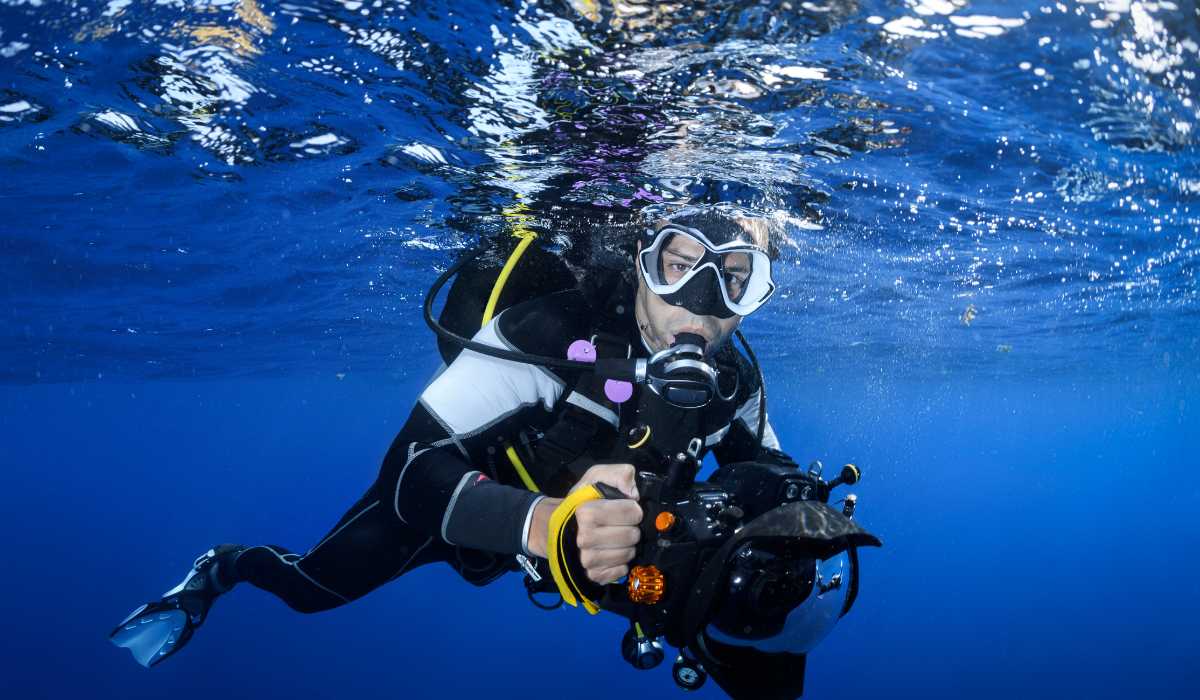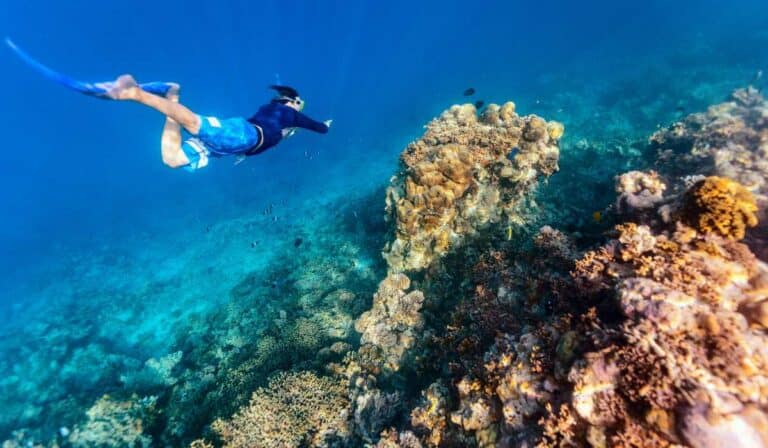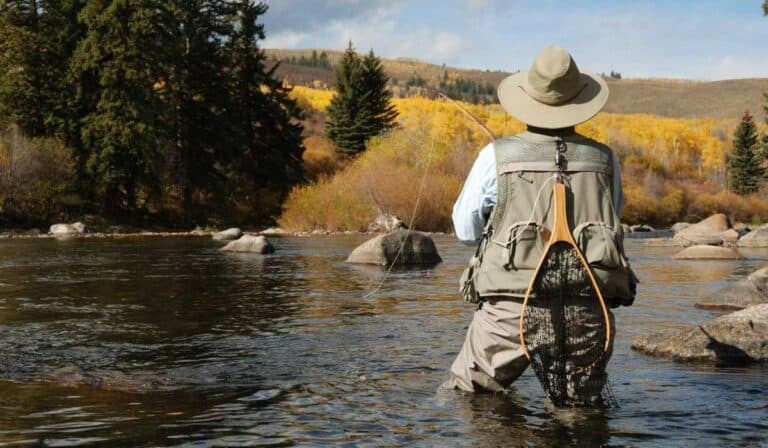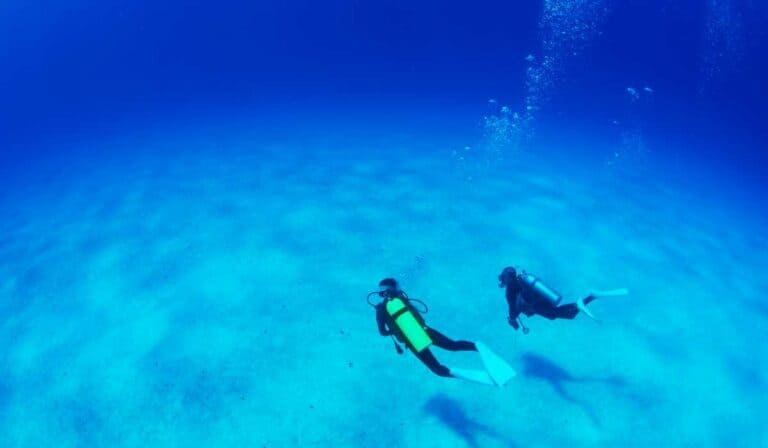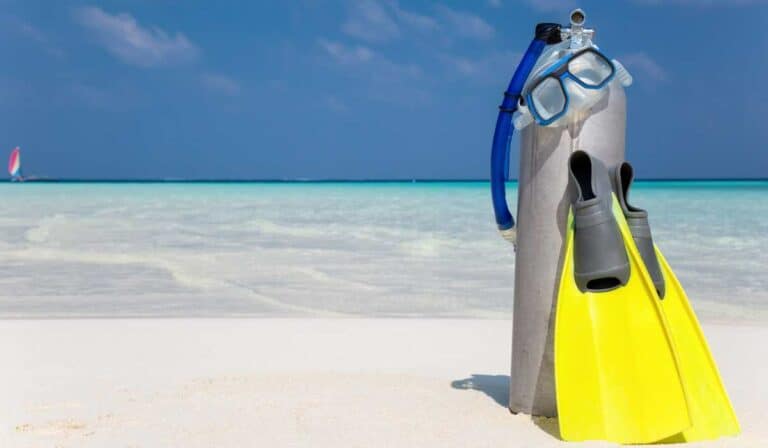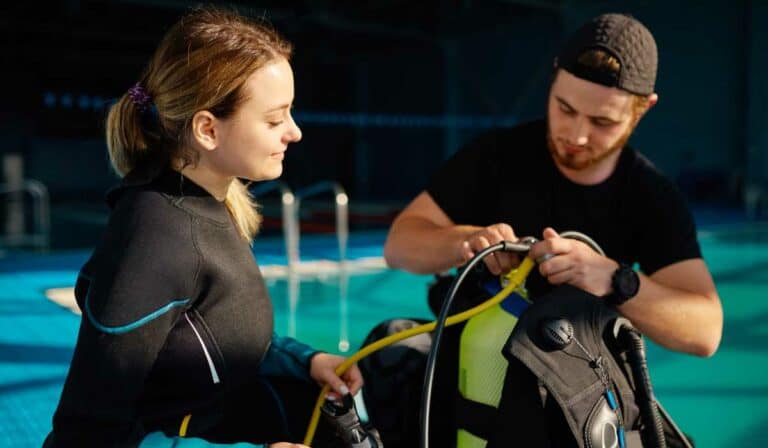The Ultimate Guide to Scuba Diving Photography
From the depths of the ocean, join us as we venture into a world of photography and discover how to capture stunning images beneath the surface. This comprehensive guide is designed for anyone wanting to have fun and experience new things exploring planet Earth.
Throughout this post, we will discuss everything from choosing the right camera for your underwater photography adventure, essential gear and accessories needed, taking great underwater photos, editing techniques that enhance your images’ quality, showcasing your work in a captivating manner, and safety tips every underwater photographer should follow.
Whether you’re a beginner or an experienced diver looking to improve your skills in capturing breathtaking moments under the sea, our Scuba Diving Photography 101 guide has something valuable for everyone. So grab your fins and let’s embark on this exciting journey together!
Table of Contents
1. What is Scuba Diving Photography?
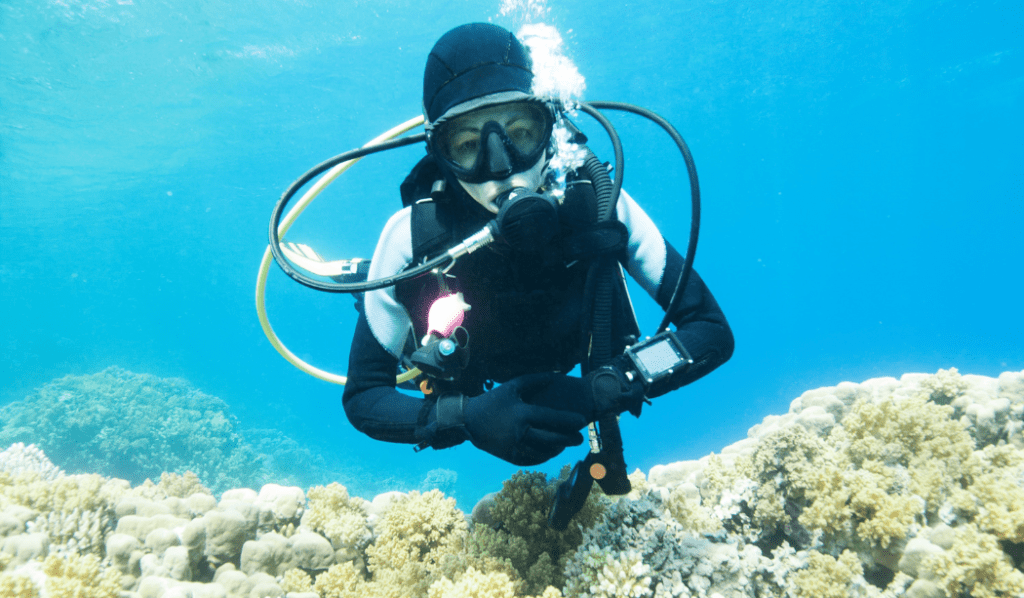
Scuba diving photography is the art of capturing stunning images of the underwater world while exploring its depths with scuba diving gear. It combines two exciting hobbies – scuba diving and photography – allowing you to immerse yourself in an entirely different environment filled with vibrant colors, unique marine life, and breathtaking landscapes.
From documenting rare species and their habitats to showcasing awe-inspiring moments such as swimming alongside majestic sea creatures or discovering hidden shipwrecks, there’s no shortage of subjects for your lens when it comes to scuba diving photography.
Click here to read about Best Knives for Scuba Diving: Safety Tools for Exploring the Depths
2. A Brief Overview of Scuba Diving Photography
- Underwater Cameras: To get started with scuba diving photography, you’ll need a camera that can withstand being submerged in water at various depths without getting damaged. There are several types available on the market today, including compact point-and-shoot cameras designed specifically for underwater use and more advanced DSLR or mirrorless models housed in waterproof cases.
- Gear & Accessories: In addition to a suitable camera, other essential equipment includes dive lights for illuminating dark environments or adding color back into photos taken at depth; strobes which provide additional lighting options; and mounting systems like trays or arms that help stabilize your setup during dives.
- Dive Skills & Techniques: As a budding underwater photographer, it’s crucial that you’re comfortable navigating through aquatic environments and have a solid understanding of scuba diving safety principles. This includes proper buoyancy control, air management, and situational awareness to ensure you can focus on capturing the perfect shot without compromising your well-being.
- Post-Processing: Once you’ve captured your underwater images, it’s time to bring them to life through editing software like Adobe Lightroom or Photoshop. Adjusting exposure levels, color balance, and contrast are just some of the techniques used by photographers to enhance their work and create visually stunning results.
Exploring the ocean depths with a camera can be an exhilarating experience, allowing one to document and share the stunning visuals of aquatic life. Selecting the correct camera for underwater photography is essential to ensure your shots are as vivid and sharp as can be.
The Key Takeaway:
Photography while scuba diving is the creative pursuit of capturing spectacular visuals beneath the sea with specialized dive gear. To get started, you’ll need a camera that can withstand being submerged in water at various depths without getting damaged and other essential equipment such as dive lights, strobes, and mounting systems to help stabilize your setup during dives.
3. Choosing the Right Camera for Scuba Diving Photography
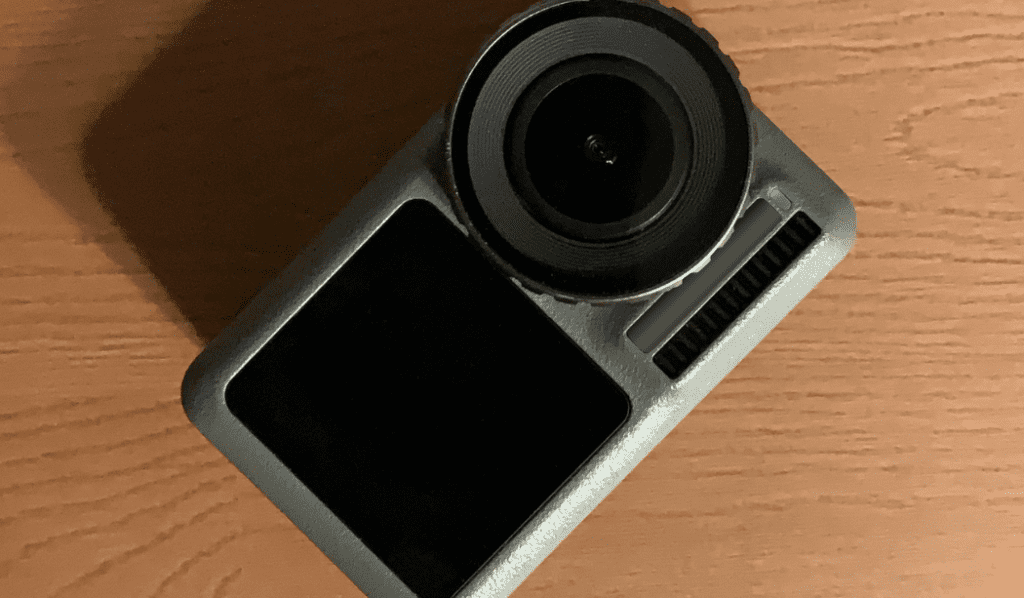
Diving into the realm of underwater photography can be an energizing yet daunting undertaking, particularly with regard to picking the ideal camera for your submerged scuba-plunging experiences. For those looking to make an informed decision, it is important to understand the features and capabilities of the various cameras available.
a) Compact Cameras
Compact cameras are a great pick for those just starting out in photography, due to their straightforward controls, affordability, and portability. Many compact cameras have built-in waterproofing or can be paired with affordable underwater housings that protect them from water damage at depth. These cameras often come with various shooting modes designed specifically for underwater photography, making it easier to capture stunning images without extensive knowledge of manual settings.
Click here to read about Best Scuba Diving Accessories for a Comfortable and Enjoyable Dive
b) Mirrorless Cameras
If you’re looking for something more advanced than a compact camera but not quite ready to invest in a DSLR system, mirrorless cameras might be just what you need. They provide better image quality and greater control over settings compared to compacts while still being relatively lightweight and easy to use. Some popular mirrorless models also have interchangeable lenses which allow you greater flexibility in capturing different types of shots during your dive.
c) DSLR Cameras
DSLR (Digital Single-Lens Reflex) cameras are considered top-of-the-line equipment among professional photographers and experienced enthusiasts. They offer the highest image quality, the fastest autofocus, and the most extensive range of lens options for underwater photography. However, they can be bulky and expensive – especially when you factor in the cost of high-quality underwater housing to protect your investment.
d) Action Cameras
For those who want to capture both still images and video footage during their dives, action cameras like GoPro are an excellent choice. These small, durable cameras can easily be mounted on your scuba gear or held in hand while diving. While they may not have all the features or produce the same image quality as other camera types mentioned above, action cameras are perfect for documenting your dive experience without breaking the bank.
To help you choose which type of camera is best suited for your needs and budget, consider factors such as:
- Your level of expertise with photography equipment
- The type of shots you wish to capture (e.g., wide-angle vs macro)
- Your budget constraints
- The importance of portability and ease of use during dives
By carefully considering these factors along with researching various models within each category mentioned above at sites like Backscatter Underwater Video & Photo, you’ll be well-equipped to make an informed decision about which camera will best suit your scuba diving photography needs.
Selecting the ideal camera for taking pictures underwater is a key factor in guaranteeing amazing photographs. With the essential gear and accessories, you can make sure your images are even more impressive.
The Key Takeaway:
Selecting a suitable camera for underwater photography can be daunting, but comprehending the features and functions of each kind is critical. Compact cameras are user-friendly and affordable, while mirrorless cameras offer better image quality and greater control over settings. DSLR cameras provide the highest image quality but can be bulky and expensive, while action cameras like GoPro are perfect for documenting your dive experience without breaking the bank. Think about the different aspects, such as your skill level, the type of pictures you want to take, budget limitations, size, and ease of use when selecting which camera is right for you.
4. Essential Gear and Accessories for Scuba Diving Photography
Taking breathtaking underwater photos requires more than just a camera; you’ll need the right gear and accessories to ensure your scuba diving photography experience is successful. To ensure your scuba diving photography endeavors are successful, we’ll explore some essential items that can help you capture stunning images beneath the sea.
A. Underwater Camera Housing
An underwater camera housing is crucial for protecting your camera from water damage while also providing access to controls and buttons needed during your dive. Make sure to choose a housing specifically designed for your camera model, as well as one rated for an appropriate depth based on your diving certification level.
B. Strobes and Lighting Equipment
Proper lighting is key when it comes to underwater photography since natural light quickly diminishes with depth. Invest in quality strobes or video lights that provide ample illumination without overpowering subjects or causing backscatter (the reflection of particles suspended in water).
- Strobes: These are powerful flashes used primarily for still photography, offering quick bursts of light that freeze motion and bring out vibrant colors.
- Video Lights: As their name suggests, these continuous lights are ideal for shooting videos but can also be useful when taking stills at close range or using slower shutter speeds.
C. Trays, Arms, and Clamps
To achieve proper lighting and camera stability, you’ll need a tray system that holds your camera housing, strobes or video lights, and other accessories. This setup typically consists of:
- Trays: These provide a base for attaching the camera housing and arms.
- Arms: Extendable segments that connect to trays on one end and strobes or video lights on the other.
- Clamps: Used to join multiple arms together at various angles, allowing for flexible positioning of your lighting equipment.
D. Lenses and Filters
To capture stunning underwater images with sharp details and accurate colors, consider investing in specialized lenses or filters designed specifically for underwater use. Some popular options include:
- Fisheye Lenses: These ultra-wide-angle lenses allow you to fit more into each frame while also providing an interesting perspective unique to scuba diving photography.
- Magnifying Diopters (Macro Lenses): Add-on magnifying lenses used for close-up shots of small subjects like fish or coral without losing image quality due to cropping.
- Color Correction Filters: Attach these filters directly onto your lens or inside the housing port; they help balance out color casts caused by water absorption so photos appear more natural-looking. Red filters are commonly used in blue waters, while magenta filters work well in green waters.
Click here to read about The Costs Of Buying Your Own Scuba Equipment
E. Maintenance Tools & Spare Parts
Finally, don’t forget to pack essential maintenance tools and spare parts that can help you troubleshoot any issues while on location. Some must-haves include:
- O-ring Grease: This lubricant is used to keep O-rings (the seals in your camera housing) supple, preventing leaks.
- Spare O-rings: Always carry a set of replacement O-rings for your camera housing and strobes, just in case one gets damaged or lost.
- Lens Cleaning Cloth & Blower: Keep these handy for removing water droplets, dust particles, or smudges from lenses before diving.
- Multi-Tool: A compact multi-tool with various screwdriver heads, pliers, scissors, etc. can be invaluable when making adjustments or repairs during dives.
Invest in the essential apparatus and extras for underwater photography to not only enhance your pictures but also upgrade your entire diving experience. Remember always to practice responsible diving habits and prioritize safety above all else when capturing stunning photos beneath the waves.
Essential items and extras for capturing pictures while scuba diving are a must, so having the appropriate gear is critical. Now that you’ve got the necessities, let’s plunge into capturing stunning images while underwater.
The Key Takeaway:
To take stunning underwater photos while scuba diving, you need the right gear and accessories. This includes an underwater camera housing, strobes or video lights for proper lighting, trays, and arms for stability, specialized lenses or filters for accurate colors and sharp details, as well as maintenance tools like O-ring grease and spare parts.
5. Taking Great Photos While Scuba Diving
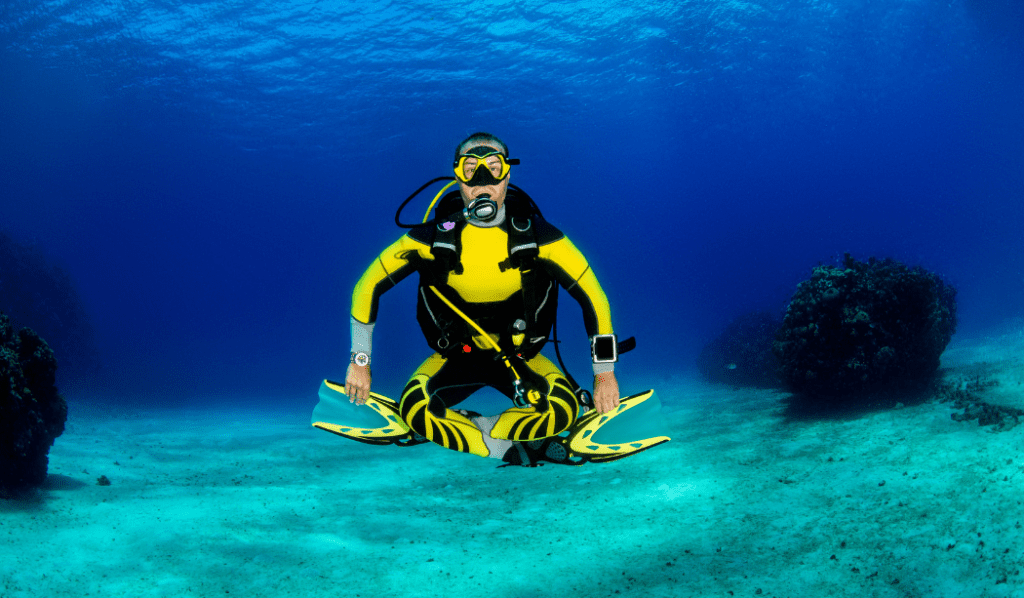
Exploring the depths of the sea with a camera can be an exciting experience, yet capturing incredible images while scuba diving demands proficiency, forbearance, and comprehension. To ensure you get the best possible shots while scuba diving, we’ll provide some helpful tips and tricks.
4.1 Master Your Buoyancy Control
The key to taking great photos while scuba diving is having excellent buoyancy control. This allows you to hover in one spot without disturbing marine life or damaging coral reefs. Practice your buoyancy skills before attempting photography so that you can focus on getting the perfect shot instead of struggling with your position in the water.
4.2 Get Close to Your Subject
Underwater visibility can often be limited due to particles suspended in the water column. To capture clear images, try getting as close as possible to your subject (without causing harm) – ideally within 12 inches (30 cm). This will also help minimize backscatter from floating debris reflecting the off-camera flash.
4.3 Use Natural Light When Possible
Natural light creates more vibrant colors and helps avoid harsh shadows caused by artificial lighting sources like strobes or flashes. Whenever possible, use natural sunlight for illuminating subjects at shallow depths (20 meters or less). If using artificial lights becomes necessary for deeper dives or low-light conditions, consider investing in high-quality external strobes for better results.
4.4 Learn About Underwater Composition Techniques
Underwater photography has its own set of composition rules that differ from those on land. Familiarize yourself with techniques like the Rule of Thirds, diagonal lines, and negative space to create visually appealing images. Additionally, try shooting subjects from different angles – such as a low-angle shot looking up at your subject – for more dynamic results.
4.5 Be Patient and Respectful of Marine Life
- Patience: Some marine creatures can be shy or skittish around divers, so it’s essential to approach them slowly and calmly. Give them time to become comfortable with your presence before attempting to photograph them.
- Respect: Never harass or disturb marine life in an attempt to get a better photo. Keep a safe distance from animals and avoid touching or moving anything underwater.
Taking great photos while scuba diving is both an art and a science that requires practice, patience, and knowledge about underwater environments. By following these tips and continually refining your skills through experience, you’ll soon be capturing breathtaking images beneath the waves.
Taking great photos while scuba diving requires practice and patience, but the results are worth it. With a few tricks, you can boost the quality of your underwater snaps.
The Key Takeaway:
To take amazing underwater shots, scuba divers need to master buoyancy control and get close to their subjects while being patient and respectful of marine life. Using natural light when possible and learning about underwater composition techniques can also help capture stunning photos.
6. Editing Your Underwater Photos
After a thrilling dive and capturing some amazing underwater moments, it’s time to bring your photos to life through editing. This section delves into how to employ diverse techniques and tools for boosting the colors, contrast, and general quality of your underwater pics.
A. Choosing the Right Photo Editing Software
There are numerous photo editing software options available for both beginners and professionals alike. Some popular choices include:
- Adobe Photoshop: A powerful tool with advanced features for professional-level editing.
- Adobe Lightroom: A user-friendly option that focuses on organization and basic adjustments like exposure, color balance, and cropping.
- Affinity Photo: An affordable alternative to Photoshop with similar capabilities.
- Snapseed: A free mobile app offering a range of easy-to-use filters and adjustment tools.
Click here to read about 6 Top Rated Professional Scuba Diving Masks
B. Adjusting White Balance & Colors
Underwater photos often have a blue or green tint due to light absorption at different depths. To correct this issue:
- Select the white balance tool in your chosen software application (e.g., eyedropper).
- Utilize the white balance tool to adjust your photo’s color balance by clicking on a neutral area, such as white or gray.
You can also use tools like hue/saturation or vibrance adjustments to enhance specific colors and make them pop.
C. Improving Contrast & Sharpness
Underwater photos often lack contrast due to light scattering through water particles. To improve contrast:
- Use the levels or curves adjustment tool in your editing software.
- Adjust the dark, mid-tone, and light tones to get your desired outcome.
To sharpen your images, apply an unsharp mask filter or use a high-pass filter with a blend mode set to overlay or soft light.
D. Removing Unwanted Objects & Backscatter
Sometimes underwater photos may have unwanted objects such as debris floating around or backscatter caused by suspended particles reflecting light from your camera’s flash. Use tools like a spot healing brush, clone stamp, or patch tool in Photoshop to remove these distractions and create cleaner images.
E. Cropping for Better Composition
Last but not least: don’t forget about cropping. Sometimes all it takes is a simple crop to turn an average photo into something extraordinary by improving its composition and eliminating unnecessary elements from the frame. Experiment with different aspect ratios and focal points until you find what works best for each image.
Editing your underwater snaps can be a fulfilling task, allowing you to appreciate the magnificence of the deep through your own lens. With proper knowledge and techniques, showcasing your underwater photos will take it to another level.
The Key Takeaway:
This section discusses the importance of editing your underwater photos to enhance their quality. It covers choosing the right photo editing software, adjusting white balance and colors, improving contrast and sharpness, removing unwanted objects and backscatter, as well as cropping for better composition. Remember that sometimes all it takes is a simple crop to turn an average photo into something extraordinary.
7. Showcasing Your Underwater Photos
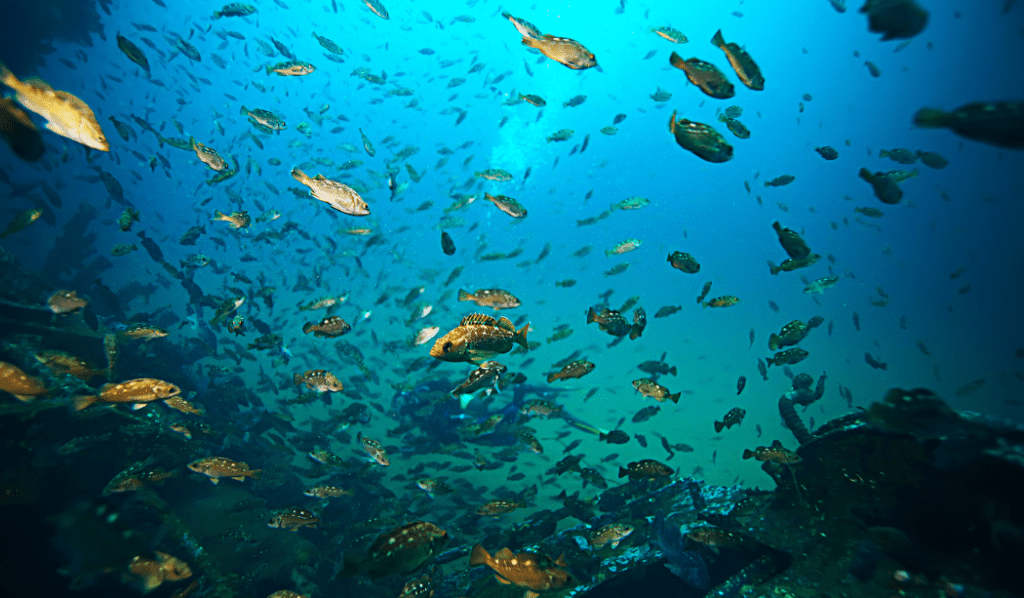
Now that you’ve taken some awesome pics beneath the waves, it’s time to flaunt them. There are numerous ways to showcase your scuba diving photography, both online and offline. In this section, we’ll explore various platforms and methods for displaying your stunning underwater images.
A. Online Galleries
The internet offers countless opportunities for sharing your photos with a global audience. Some popular options include:
- Instagram: This social media platform is perfect for showcasing your best shots in a visually appealing grid format.
- Flickr: A dedicated photo-sharing site where you can create albums and join groups related to underwater photography.
- 500px: A professional-grade platform geared towards photographers looking to license their work or gain exposure within the industry.
- Your own website: Create a personal portfolio site using website builders like Wix, and Squarespace, or even start an adventure blog like SunWaterDirt.
B. Print Displays & Exhibitions
If you prefer physical displays of your artwork, consider these options:
- Framed prints: Display large framed prints on the walls of your home or office to add a touch of the underwater world to your everyday life.
- Photo books: Compile your best underwater photos into a professionally printed photo book. Companies like Blurb and Shutterfly offer customizable templates and high-quality printing options.
- Local exhibitions: Reach out to local galleries, cafes, or community centers that may be interested in showcasing your work as part of an exhibition or event.
C. Competitions & Magazines
To gain recognition within the underwater photography community, consider submitting your work to competitions and publications:
- Underwater Photography Guide’s annual contest: This prestigious competition attracts entries from around the world and offers cash prizes for winners in various categories.
- DIVE Magazine’s PhotoLab: Submitting images to this popular dive magazine could result in having them featured on their website or even published in their print edition.
No matter which platform you choose for showcasing your underwater photos, remember that sharing these unique glimpses into our planet’s aquatic environments can inspire others to appreciate and protect our oceans. So go ahead – show off those stunning shots.
After showcasing your underwater photos, you can feel confident that they will turn out great. Now let’s move on to the next topic of safety tips for scuba diving photography.
The Key Takeaway:
This section explores various ways to showcase your scuba diving photography, both online and offline. It suggests using social media platforms like Instagram or Flickr, creating a personal website or blog, displaying framed prints at home or office, compiling photo books, and submitting work to competitions and publications such as Underwater Photography Guide’s annual contest or DIVE Magazine’s PhotoLab. Remember that sharing these unique glimpses into our planet’s aquatic environments can inspire others to appreciate and protect our oceans.
8. Safety Tips for Scuba Diving Photography
While capturing stunning underwater photos is the main goal, it’s essential to prioritize safety when scuba diving and taking photographs. Here are some crucial safety tips to keep in mind during your underwater photography adventures.
A. Stay Within Your Limits
It’s important to know and respect your limits as a diver before focusing on photography. Ensure you have proper scuba diving certifications, experience, and training for the dive site you’re visiting. Do not attempt to exceed your limits or step out of your comfort zone solely for the purpose of capturing an ideal photograph.
B. Maintain Buoyancy Control
Good buoyancy control is vital not only for taking great photos but also for ensuring your own safety and protecting marine life from accidental damage caused by touching or bumping into them while trying to capture an image. Practice maintaining neutral buoyancy while using your camera gear so that you can focus on framing shots without compromising stability.
C. Be Aware of Your Surroundings
When engrossed in capturing images, it’s easy to lose track of time, depth, air supply, or even where you are relative to other divers or boat support above water level (DAN Hazardous Marine Life Guide). Always monitor these factors throughout the dive and communicate with your buddy regularly about any concerns.
- Dive Time: Keep an eye on how long you’ve been underwater so that you don’t exceed planned bottom times or decompression limits.
- Depth: Be mindful of your depth and avoid exceeding the limits set by your dive plan or certification level.
- Air Supply: Regularly check your air supply to ensure you have enough for a safe ascent, including any required safety stops.
D. Dive with a Buddy
Always dive with a buddy who is also familiar with underwater photography or at least understands the challenges it presents. This way, they can keep an eye on you while you’re focused on taking photos and assist if needed. Make sure to establish clear communication signals before diving so that both parties know how to alert each other in case of any issues during the dive.
E. Protect Marine Life
The ocean’s inhabitants are often curious about divers and their cameras, but it’s essential not to disturb them in their natural habitat while trying to capture images (Project AWARE Tips for Underwater Photographers). Avoid touching marine life or getting too close, as this could stress them out or even cause harm. Always practice responsible underwater photography by respecting local guidelines and regulations regarding interactions with marine species.
Taking these safety tips into account will help ensure that your scuba diving photography experience is enjoyable and successful without compromising personal well-being or harming our precious aquatic ecosystems.
The Key Takeaway:
When scuba diving and taking photographs, safety should be a top priority. It’s important to know your limits as a diver, maintain buoyancy control, be aware of your surroundings, dive with a buddy who understands underwater photography challenges, and protect marine life by avoiding touching or getting too close to them. By following these tips you can enjoy successful scuba diving photography without compromising personal well-being or harming aquatic ecosystems.
Click here to read about Scuba Diving Cameras: Top Picks for Underwater Photography
Scuba Diving Photography 101
How to Take Great Underwater Photos While Scuba Diving
If you’re an underwater photography enthusiast, you know that capturing stunning images of marine life can be a thrilling and rewarding experience. However, taking great underwater photos requires more than just a camera and a willingness to dive. Here are some tips to help you take your underwater photography to the next level:
- Master your diving skills: Before you can take great underwater photos, you need to be a confident and skilled scuba diver. Make sure you’re comfortable with buoyancy control, and practice maintaining neutral buoyancy while taking photos.
- Choose the right camera: There are many camera models available for underwater photography, from compact cameras to DSLRs. Consider your skill level and budget when choosing a camera, and make sure it’s compatible with underwater housing and wet lenses.
- Understand your camera’s settings: Familiarize yourself with your camera’s settings before you dive. Adjust your camera’s settings according to depth and visibility conditions, and experiment with different shutter speeds and aperture settings to achieve the desired image quality.
- Use appropriate lighting: Lighting is crucial for underwater photography. Use natural light or external strobes to illuminate your subject, and avoid using the camera’s built-in flash, which can create backscatter and ruin your photos.
- Get close to your subject: To capture the details of your subject, get as close as possible without disturbing it. Shoot at an upward angle to create a more dynamic composition.
- Practice patience: Underwater photography requires patience and persistence. Wait for the right moment to capture your subject, and be prepared to take multiple shots to get the perfect image.
By following these tips, you can take your underwater photography adventure to the next level and achieve your underwater photography goals.
Underwater Photography Basics
Underwater photography is a unique and challenging form of photography that requires specialized equipment and techniques. Here are some basics to keep in mind:
- Choose the right camera: Consider your skill level and budget when choosing a camera for underwater photography. Compact cameras are a good option for beginner photographers, while DSLRs and mirrorless cameras with interchangeable lenses are better for more experienced photographers.
- Understand your camera’s settings: Adjust your camera’s settings according to depth and visibility conditions. Use a fast shutter speed to freeze motion, and a small aperture to create a greater depth of field.
- Use appropriate lighting: Lighting is crucial for underwater photography. Use natural light or external strobes to illuminate your subject, and avoid using the camera’s built-in flash.
- Get close to your subject: To capture the details of your subject, get as close as possible without disturbing it. Shoot at an upward angle to create a more dynamic composition.
- Practice buoyancy control: Maintaining neutral buoyancy is essential for taking great underwater photos. Practice maintaining neutral buoyancy while taking photos to avoid disturbing marine life and damaging the environment.
- Experiment with different lenses: Macro lenses are great for capturing small details, while fisheye lenses can create a unique perspective. Dome ports can also be used to create a wider field of view.
By mastering these underwater photography basics, you can take great underwater photos and capture stunning images of marine life.
Underwater Photography Tips for Beginners
Are you a beginner photographer looking to take your first underwater photos? Here are some tips to help you get started:
- Choose the right camera: Compact cameras are a good option for beginner photographers, as they are affordable and easy to use. Look for a camera with good image quality and sturdy underwater housing.
- Practice buoyancy control: Maintaining neutral buoyancy is essential for taking great underwater photos. Practice maintaining neutral buoyancy while taking photos to avoid disturbing marine life and damaging the environment.
- Use appropriate lighting: Lighting is crucial for underwater photography. Use natural light or external strobes to illuminate your subject, and avoid using the camera’s built-in flash.
- Get close to your subject: To capture the details of your subject, get as close as possible without disturbing it. Shoot at an upward angle to create a more dynamic composition.
- Experiment with different lenses: Macro lenses are great for capturing small details, while fisheye lenses can create a unique perspective. Dome ports can also be used to create a wider field of view.
- Adjust your camera’s settings: Adjust your camera’s settings according to depth and visibility conditions. Use a fast shutter speed to freeze motion, and a small aperture to create a greater depth of field.
By following these tips, you can start taking great underwater photos and begin your underwater photography adventure.
Underwater Photography and Scuba Diving Safety
While underwater photography can be a thrilling and rewarding experience, it’s important to prioritize safety while diving. Here are some tips to help you stay safe while taking photos underwater:
- Never hold your breath: Holding your breath while ascending from a dive can lead to serious injuries caused by expanding air inside your lungs. Always breathe continuously throughout the entire dive process.
- Stay within your limits: Don’t push yourself beyond your limits while diving. Make sure you’re comfortable with the dive conditions and your equipment before entering the water.
- Be aware of your surroundings: Always be aware of your surroundings while diving, and avoid touching or disturbing marine life.
- Stay with your dive group: Stick with your dive group and follow the dive plan to ensure everyone’s safety.
- Check your equipment: Before diving, check your equipment to make sure it’s functioning properly. Make sure your camera’s settings are adjusted for underwater shooting.
Conclusion
Scuba diving photography is an exhilarating experience that allows you to discover the captivating underwater environment. With the right camera, gear, and skills, you can capture stunning images of marine life and coral reefs.
Remember to always prioritize safety while scuba diving and taking photographs. Practice good buoyancy control and be aware of your surroundings at all times. By following these tips and techniques, you’ll be well on your way to creating amazing underwater photos that will leave a lasting impression.

